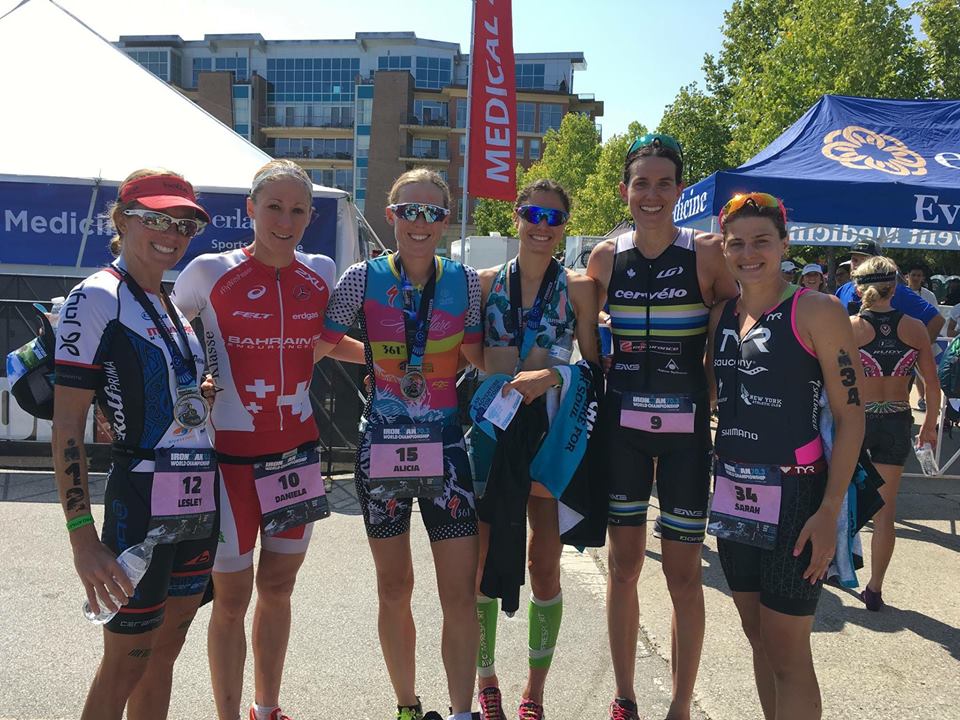5 takeaways from the 2017 Ironman 70.3 World Championships
Our reflections on the weekend of 70.3 world championship racing.

The 2017 Ironman 70.3 World Championships have wrapped up and now triathlon’s attention turns to the Big Island for the 2017 Ironman World Championship in just a few weeks’ time. After reflecting on the two days of racing, here are our five takeaways from this year’s event:
The two-day format is a winner
Ironman made a big move in the right direction towards equality with the two-day format. The women finally got the chance to break the tape first in the race, and the pro women’s race got great coverage for the first time in the 70.3 world championship’s history. It was nice to see an entire 24 hours dedicated to just the women’s race, and winner Daniela Ryf earn the attention she deserved for such a phenomenal performance. It also provided an opportunity for other impressive performances — such as 70.3 rookie and Olympian Sarah True’s fourth place finish — to land in the spotlight.
The champ is back @danielaryf – first woman to win 3 #IM703WC titles ?? pic.twitter.com/ggZPaGXgDU
— Bahrain Endurance 13 (@bahraintri13) September 9, 2017
Sarah True showing her colors at long-course. pic.twitter.com/oFgEqh0S9U
— IRONMANLive (@IRONMANLive) September 9, 2017
Ryf has not lost any speed, is equally as dominant at the half and full distance
After Daniela Ryf landed in fourth at last year’s Ironman 70.3 World Championship in Mooloolaba, Australia, several comments were made, remarking that she may have lost her half-distance snap and would now just be dominant across the Ironman distance. Even her Bahrain Endurance 13 team manager Chris ‘Macca’ McCormack said Ryf “had hit that top of that mountain” in 70.3 dominance, and could not beat athletes like Heather Jackson or Holly Lawrence anymore, prompting an in-depth response from Ryf’s own coach, Brett Sutton.
Her race this year proved that’s just not the case. Ryf is now the only woman to hold three Ironman 70.3 World Championship titles. She absolutely crushed the field on Saturday, and appears to be just as confident in her abilities at Kona next month.
ITU athletes continue to be the next generation of 70.3 stars
Like Jan Frodeno before them, a wave of former (some still) ITU athletes proved over the weekend that they are the next generation to keep an eye on in 70.3 racing. The multi-talented Javier Gomez led the way with his second 70.3 world title, but 24-year-old Ben Kanute stole the show for most of the men’s race which he led until the late stages in the run. The USA Olympian has had several strong finishes in half distance races this year, but his second place in the hugely deep field on Sunday was his performance of the year. As mentioned in point #1, Olympian Sarah True joins this group on the women’s side.
Even the best have unexplainably bad days
Depending champion Holly Lawrence had a lot of attention on her ahead of this year’s race, especially given that she had a winning streak going since winning the 2016 70.3 World Championship in Mooloolaba. She also struggled with a foot injury during the summer which may have affected her prep for this year’s race. Whatever the reason was, she pulled out about 45km into the bike on Saturday, simply saying she “didn’t have the fight in her”. No page-long list of excuses, just the truth. It was refreshing to see, but also indicative that Lawrence is still learning to listen to and trust her body, the way all athletes are.
Canada has an talented crew of young athletes ready to make their mark on the 70.3 scene
There were no stand-out performances among Canadians at this year’s Ironman 70.3 World Championship, but several young athletes had solid races and have shown throughout the year they have the potential to beat and be the best down the road once they get more experience under their belt. Notably, Stephanie Roy finished 16th in her world championship debut, Jackson Laundry took 19th and and Taylor Reid took 20th. All three athletes are in their twenties, early into their careers and have podiums to their name already in big races. We’re excited to see them continue to rise up in future years.
